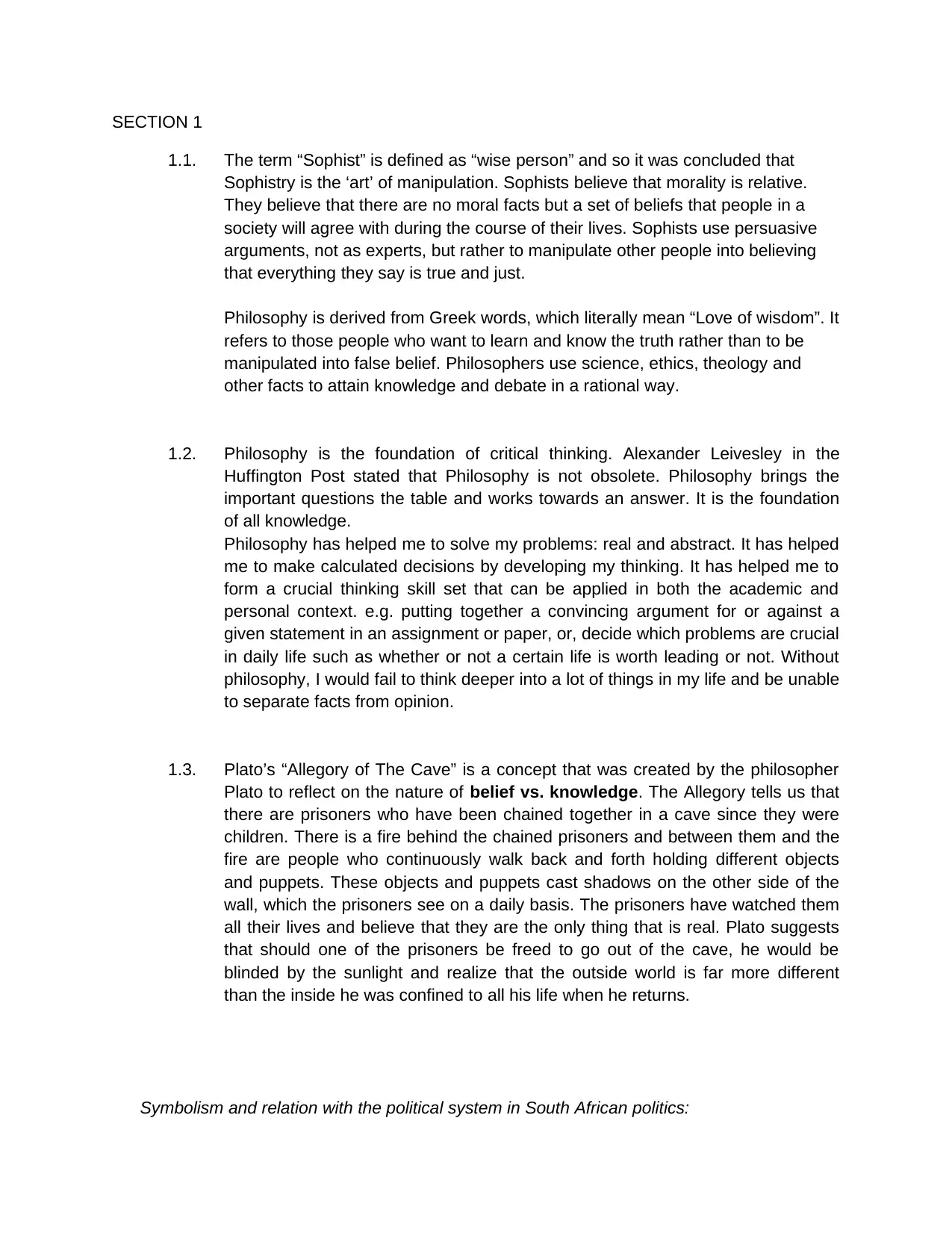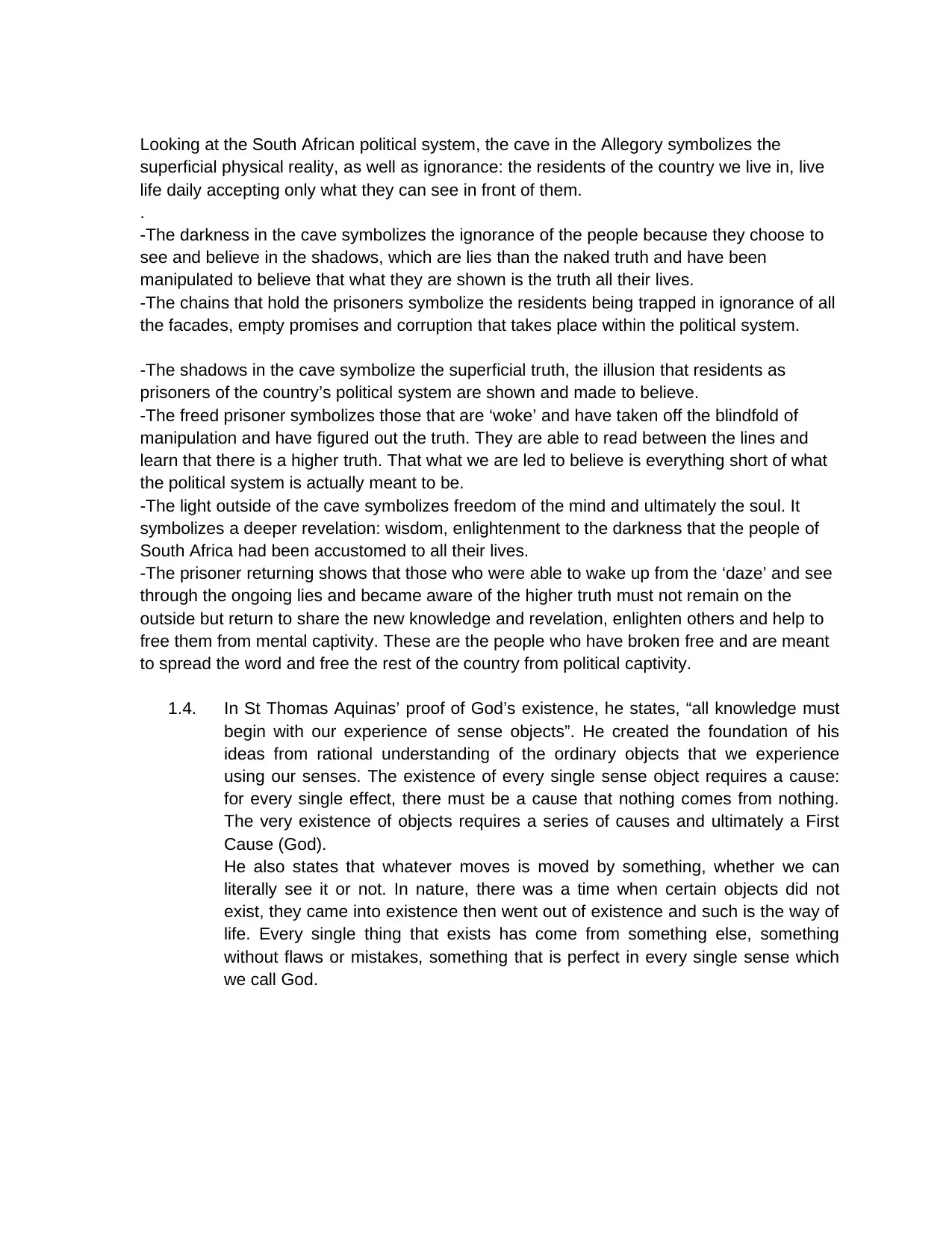A Philosophical Analysis: Sophists, Plato, and Aquinas' Ideas
VerifiedAdded on 2022/09/06
|3
|1008
|13
Essay
AI Summary
This essay explores key philosophical concepts, beginning with a definition of Sophists and their manipulative approach to persuasion, contrasting it with the philosophers' pursuit of truth. It then delves into Plato's "Allegory of the Cave," interpreting its symbolism in the context of the South African political system, where the cave represents ignorance and manipulation. The essay further analyzes the allegory's components, such as the chains, shadows, and freed prisoner, to illustrate how the political system perpetuates a superficial reality and the importance of seeking truth. The essay concludes by examining St. Thomas Aquinas' proof of God's existence, highlighting his argument that all knowledge stems from sensory experience and that the existence of objects necessitates a First Cause. The essay connects these philosophical ideas to critical thinking skills and their application in both academic and personal contexts, emphasizing the importance of philosophical inquiry in understanding complex issues and making informed decisions.
1 out of 3










![[object Object]](/_next/static/media/star-bottom.7253800d.svg)